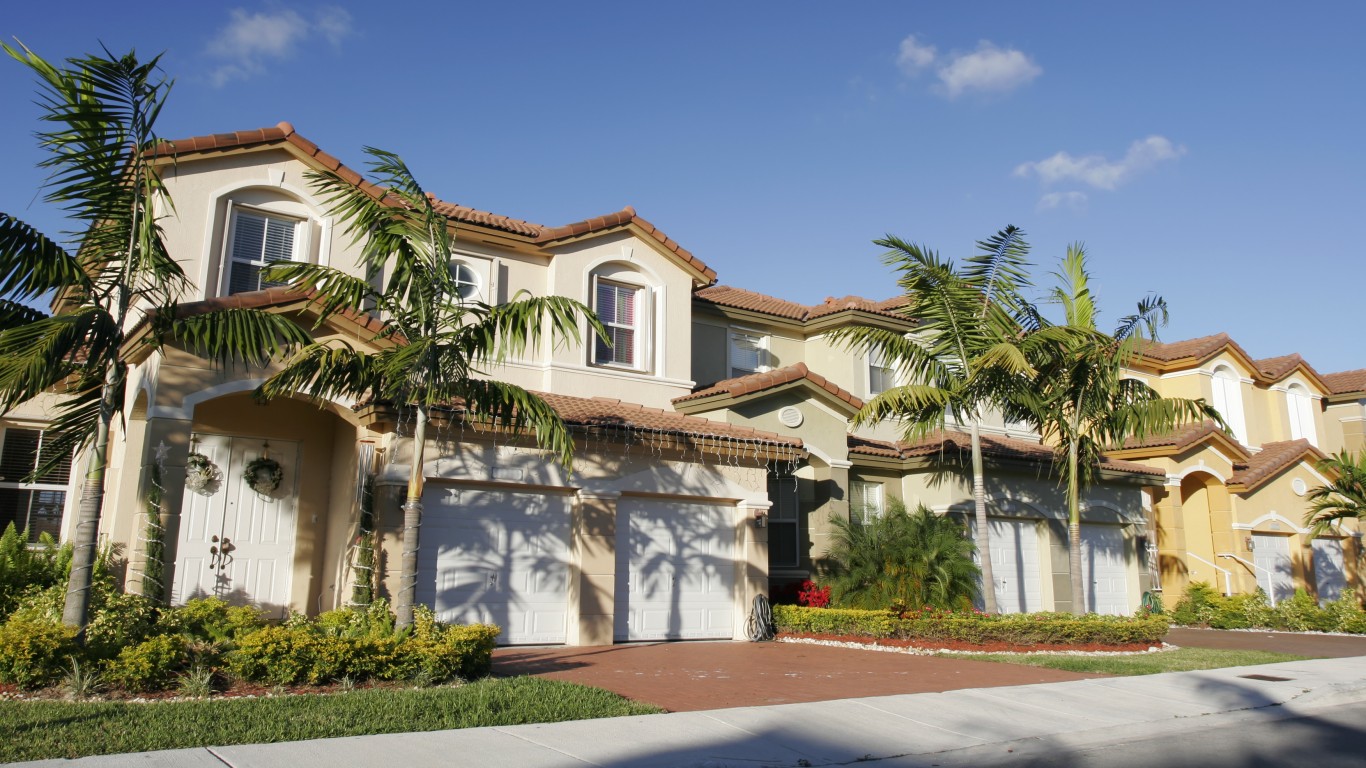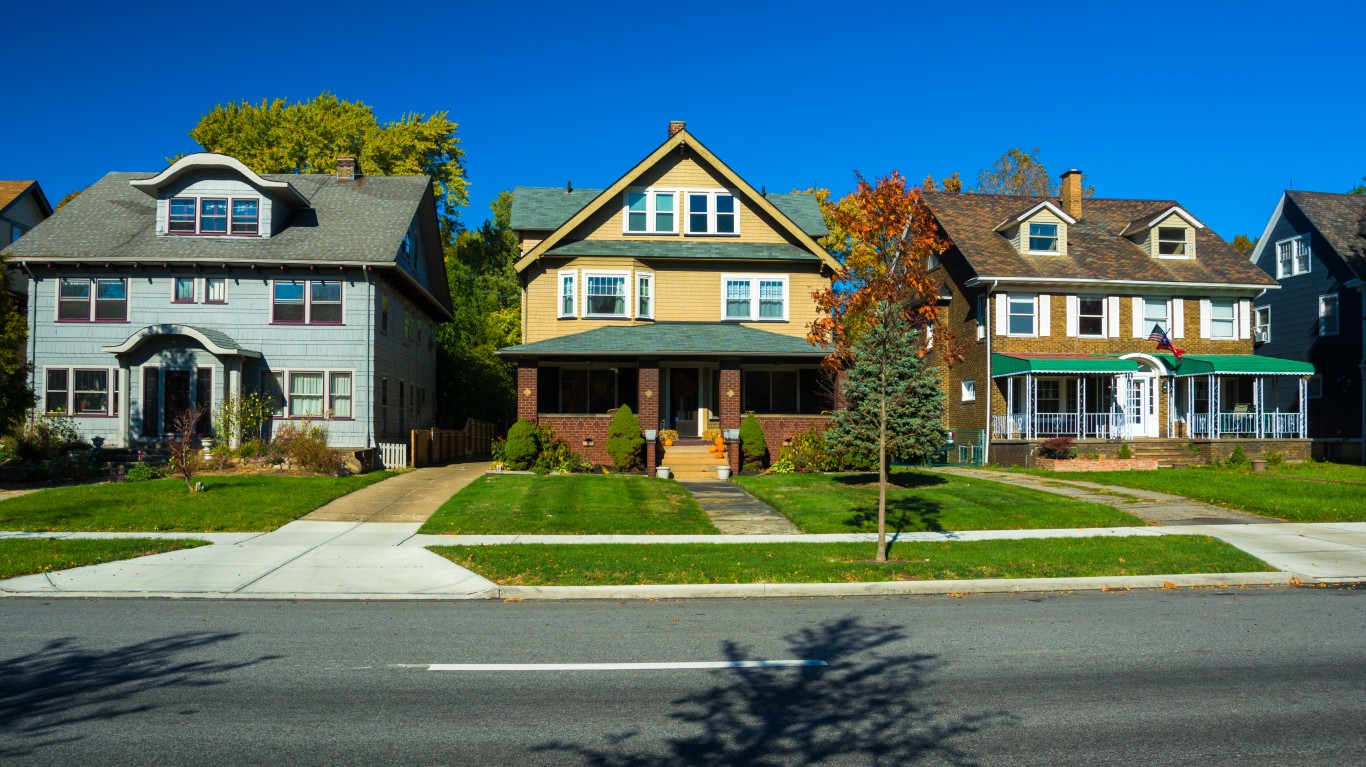
Home prices have been on a roller-coaster for the past two decades. From 2003 to 2006, prices rose and hit record levels. The housing crisis and the Great Recession cut prices in some markets by well over a third. It took until the start of the COVID-19 pandemic for prices to recover entirely. (These are the best and worst cities to live in as climate change worsens.)
[in-text-ad]
As people became more mobile during the pandemic, home prices rose more quickly. This was particularly so in the southern tier of states. The pace of home price jumps was centered in Florida and the Southwest. In some months, the cost of a home rose by 30% year over year, particularly in Phoenix, Tampa and Miami.
Pandemic prices were also helped higher by 3% mortgage rates, which made homes affordable. Home sales were brisk in almost every part of the country. That pace has slowed as mortgage rates have reached above 6% in 2023, but limited inventory has helped keep prices fairly high.
A new National Association of Realtors (NAR) study shows that home prices continue to tick up, albeit modestly. Its August report on existing home sales shows that the median existing home prices rose 3.9% to $407,100.
Median existing home sales prices varied substantially across the four regions measured. In the Northeast, the figure was $465,700. In the Midwest, $305,300, and in the South, $366,100.
Median existing home sales prices were an astonishing $609.300. The question is, why?
The NAR does not show that several large metros have the highest prices in the country. These include San Jose, San Francisco, Seattle, Los Angeles and San Diego. In San Francisco, prices are above $1 million. These cities influence the prices in the region substantially because they have nearly 20 million residents.
The Average American Has No Idea How Much Money You Can Make Today (Sponsor)
The last few years made people forget how much banks and CD’s can pay. Meanwhile, interest rates have spiked and many can afford to pay you much more, but most are keeping yields low and hoping you won’t notice.
But there is good news. To win qualified customers, some accounts are paying almost 10x the national average! That’s an incredible way to keep your money safe and earn more at the same time. Our top pick for high yield savings accounts includes other benefits as well. You can earn up to 3.80% with a Checking & Savings Account today Sign up and get up to $300 with direct deposit. No account fees. FDIC Insured.
Click here to see how much more you could be earning on your savings today. It takes just a few minutes to open an account to make your money work for you.
Thank you for reading! Have some feedback for us?
Contact the 24/7 Wall St. editorial team.



